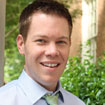Commentary on Psalm 46
This is the final week in the liturgical calendar. Christians around the world will proclaim and celebrate the reign of Christ before beginning the journey of the Christian year anew.
However, in all of this week’s lectionary texts, interesting juxtapositions await Christians eager to celebrate the glory, power, and reign of Christ the King.
The appointed Gospel reading paints a paradoxical portrait of Christ on the cross talking about Paradise. The Old Testament reading juxtaposes the chaos of scattering sheep beside gathering and protecting sheep. The Epistle contrasts enduring suffering and giving thanks with joy, and the appointed Psalm contrasts the calamities of the world with the city of God.
Specifically, Psalm 46 does what Thomas Merton said the Psalter should do. Merton said the Psalter “will, above all, tell us not merely what we ought to be but the unbelievable thing that we already are… we are at the same time in the desert and in the Promised Land. The Psalms are our Bread of Heaven in the wilderness of our Exodus.”1
The Desert and the Promised Land
Psalm 46 reminds us that we are in both the desert and in the Promised Land. In short, this Psalm is a strong affirmation of trusting God in the most troublesome situations. The opening statement (verse 1) as well as the recurring refrain (verses 7 and 11) each serves as reinforcements to God’s presence and God’s protection. God is with us, even when the world around us might seem to be falling apart. In the midst of unpredictable natural disasters that change and destroy the earth, God’s people are not to fear (verses 2-3). In the midst of political calamity, the voice of God can be heard (verse 6). In the midst of militaristic strife, God will bring peace (verse 9).
Although some interpretations of Psalm 46 have attached an “excessive literalism” to descriptions of natural, political, and militaristic disasters, Robert Alter claims that these images are most likely metaphorical. The “hyperbolic description of mountains collapsing into the sea” and the “figurative representation of an assault by enemies” must not be taken literally. They represent non-realistic descriptions and certain terms are repeated in the Hebrew language, detracting from a literal interpretation (verses 6-7). Furthermore, Jerusalem is not home to an actual river, merely an “underground stream.”2
With Alter, John Goldingay asserts that this Psalm is not about violence, but about God.3 Goldingay also warns against another misinterpretation of this Psalm. That is, too often the Christian community uses the pinnacle phrase of this Psalm, “Be still and know that I am God!” as an invitation or an excuse to ignore or withdraw from a violent and noisy world. Goldingay reminds us “nowhere do the psalms have an ideal of silence.” Rather, “their assumption is that one finds God not in silence but in noise.” Psalm 46 is “an important challenge to the superpower to stand still and recognize that God is God and that the superpower is not.”4
The Table and the City
The Cathedral of Our Lady of Angels is a spiritual haven that sits in the midst of a noisy city. The Cathedral belongs to the Catholic diocese of Los Angeles, is a remarkable structure, and has long been a meaningful place for many people. Before entering the worship space, one must walk through the cathedral’s large doors and journey down a long hallway. Upon entering the nave, most people immediately notice the large, handmade tapestries that hang on the walls. They represent the communion of saints, all those who have confessed Jesus Christ as Lord.
At the front of the worship space, behind the Table of the Lord, is a large tapestry with the image of a city map of Los Angeles. On that tapestry are inscribed words from Revelation 21:3: “God’s dwelling is among mortals. God will dwell with them. They will be God’s people. And God will be with them.” The juxtaposition of these words with the map of Los Angeles is particularly striking.
Los Angeles is a city that, like any other city, has had and continues to have its share of violence and turmoil. Yet, in the midst of that violence sits that cathedral with the Table of the Lord and a map proclaiming the dwelling place of God is not something far away but a reality on earth. Christians stop at this place daily to remind themselves that in a world where violence is inescapable, God is God and God’s promises are being fulfilled in us. But, as Psalm 46 suggests, we are to remember that “in this city, it is not for us to fix things. It is for us to expect God to fix things.”5 The Lord of hosts is with us; the God of Jacob is our refuge. Selah.
1Thomas Merton, Bread in the Wilderness (New York: New Directions, 1953), 38.
2Robert Alter, The Book of Psalms: A Translation with Commentary (New York, NY: W.W. Norton and Company, 2007), 162-163.
3John Goldingay, “Psalm 46,” in Psalms, Volume 2: 42-89, ed. Tremper Longman, III, Baker Commentary on the Old Testament Wisdom and Psalms (Grand Rapids, MI: Baker Academic, 2007), 73.
4Ibid.
5Ibid.


November 24, 2013